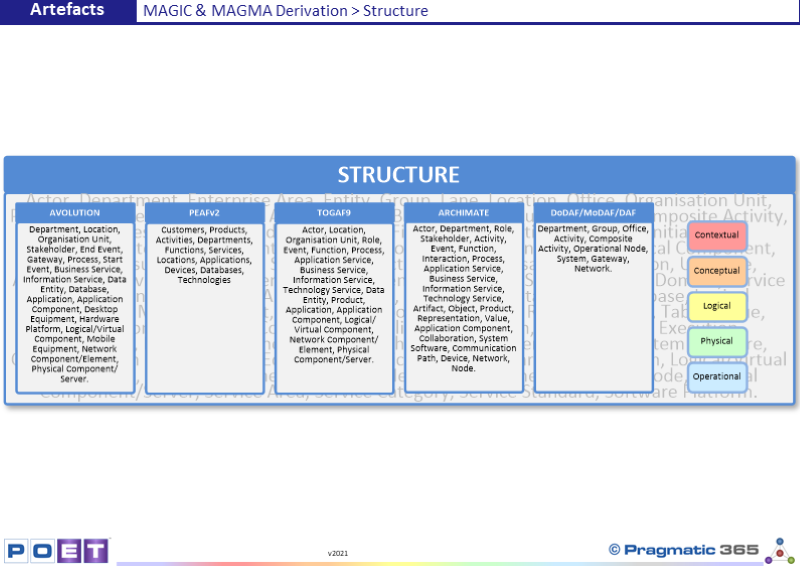
There are many meta-models out there. Some large, some small
but they all tend to describe generally the same things albeit using different
names a lot of the time.
Most meta-models have many entities related to the Structure
of the Enterprise. The WHAT; Departments, Locations, Processes, Applications,
etc, etc and most meta-models also allow for the composition and decomposition
of these entities. Although not explicit, there is also the general notion that
these things can exist at different levels of Idealisation/Realisation (one
type of Abstraction) - from the very Ideal at the top (Contextual), to the very
Real at the bottom (Operational).
...to read more, please Login or Register